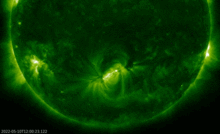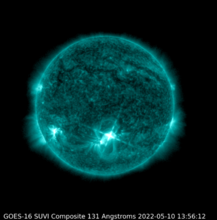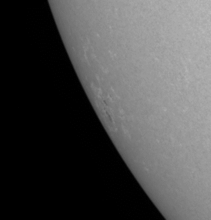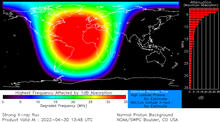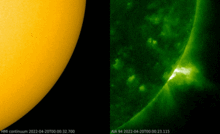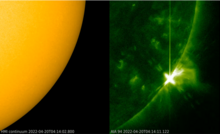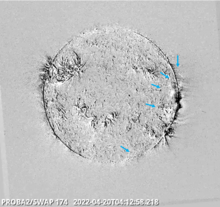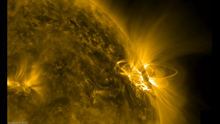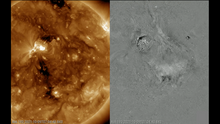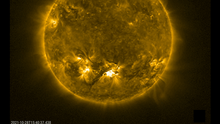news
Submitted on 2022-05-17
Last week's X-class flare showed a complex evolution in its soft x-ray emission.
Submitted on 2022-05-10
NOAA 3006 is a rather small sunspot region, that has just produced an X1.5 flare at 13:55UT today. It concerns the same region that was also responsible for the X1 flare from 3 May.
Submitted on 2022-05-09
From 27 till 29 April, the 11th installment of the ASGARD project took place on the premises of the Planetarium and the Space Pole. About 80 students from Belgium, Spain and the United Kingdom came together for 3 days to participate in this educational space project.
Submitted on 2022-05-03
An X1.1 flare was observed on 3 May at 13:25UT. It originated from a region near the southeast solar limb.
Submitted on 2022-05-03
A small enhancement in the proton flux observed on 29 April was most likely the result from a filament eruption in the spotless active region NOAA 2996.
Submitted on 2022-04-30
NOAA 2994 produced an X-class flare while already behind the Sun's northwest limb
Submitted on 2022-04-26
The sunspot complex NOAA 12993-12994 has a very peculiar outlook quite different from other sunspot groups. Only a handful of lookalikes have been observed over the last few solar cycles.
Submitted on 2022-04-20
The strongest X-class flare so far this solar cycle was produced early on 20 April. The source of the eruption was behind the southwest solar limb, and not related to activity in the NOAA 2993/2994 sunspot complex in the northeast quadrant.
Submitted on 2022-04-15
A flare-active sunspot region that rounded the solar west limb 2 weeks ago is about to rotate onto the earth-facing solar hemisphere. During its previous transit, it was the source of numerous M-class flares and produced also an X-class event on 30 March. UPDATE 2: X-class flare!
Submitted on 2022-04-12
A compilation of the most memorable space weather moments of 2021, featuring data, links and movies.
Pages
Zircon - This is a contributing Drupal Theme
Design by
WeebPal.

